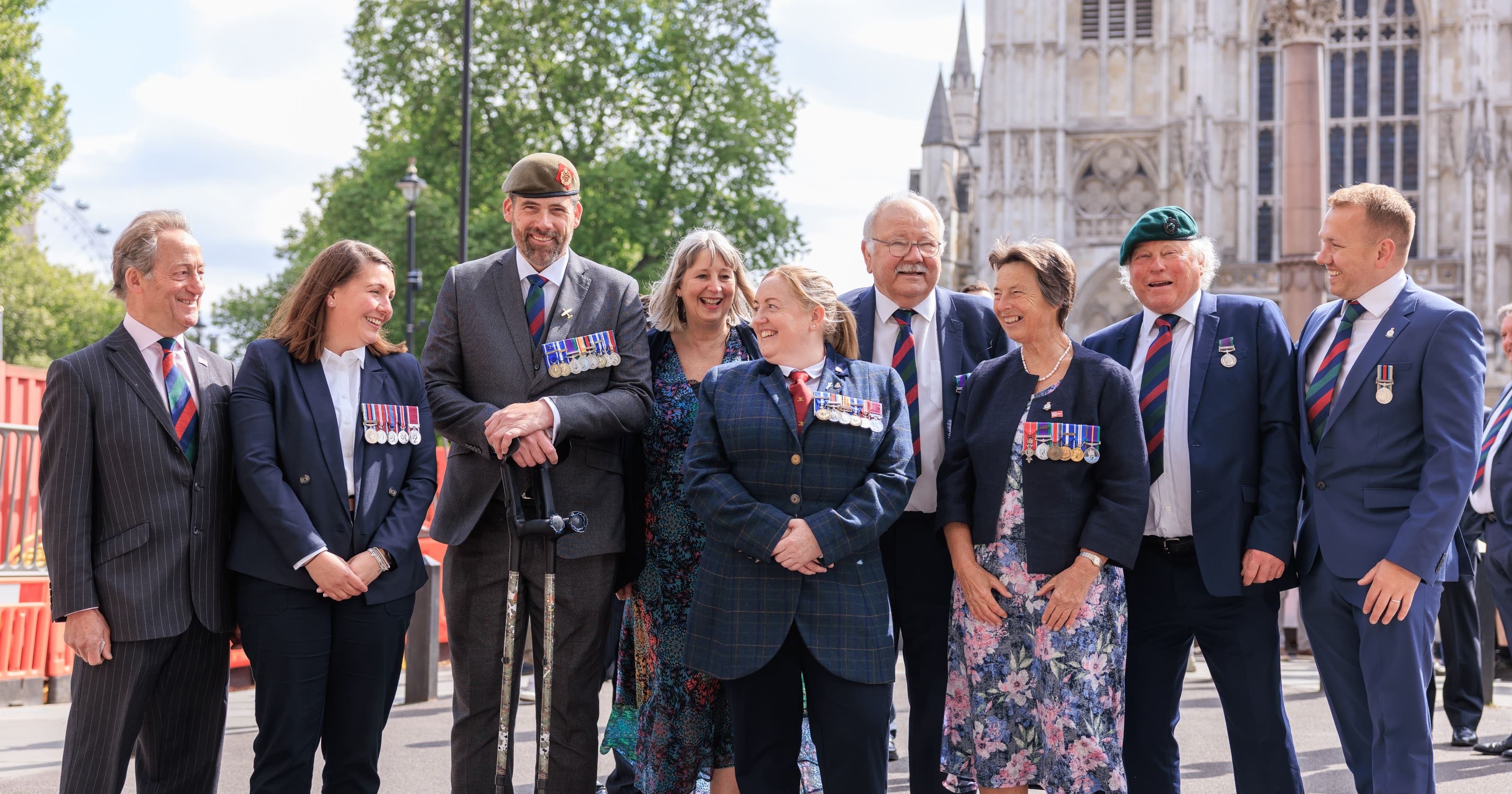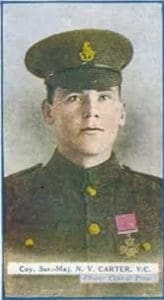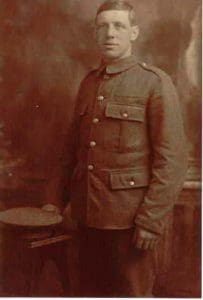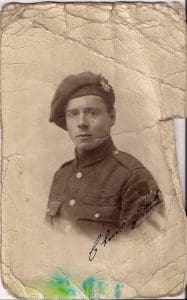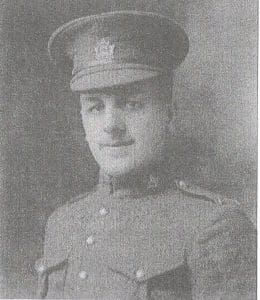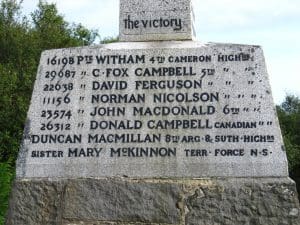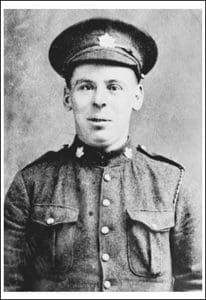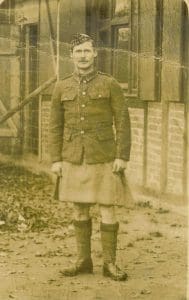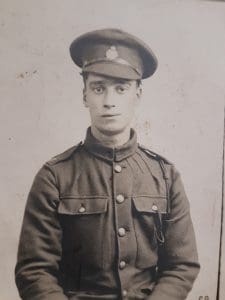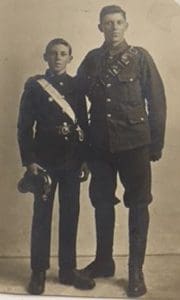In grateful Remembrance of those who served in World War One
In the lead up to this year’s Remembrance Sunday, we’ll be bringing you the stories of some of the brave men and women who fought in WWI. It was the hardships experienced by those that returned from the battlefields of WWI that led to our charity being established on 15th August, 1944.
At that time, around 3 million British soldiers were at war, notably in France, Italy and Burma, but with the end in sight, the Army Board realised that the State would not be able to provide for all the needs of those who would soon return to civilian life. The Army Benevolent Fund (as we were then known) came into being, with The Times stating that “the Fund for the Soldier is an object none can question”, because the soldier is what it is all about.
Ever since, we have remained steadfast – helping countless soldiers and veterans from every regiment and every conflict, and their families, no matter when or where they served.
We are The Soldiers’ Charity. For Soldiers – For Life.
Read more about our history here >>
Nelson Carter VC
Royal Sussex Regiment
Company Sergeant Major Nelson Carter VC was born on 6 April 1887. From Eastbourne, he served in the Royal Sussex Regiment and was awarded the Victoria Cross for amazing acts of gallantry at Boars Head on 16th June 1916. The Reserve Centre in Eastbourne is named in his honour, Carter Barracks. He was sadly killed in action on 30th June 1916, aged 29.
Fredrick Cyril Driffill
Service Number: TZ/2343
Royal Navy Volunteer Reserve, Hawke Battalion
Born in 1881, Able Seaman Frederick “Syd” Cyril Driffill was a slater from Yorkshire. In 1914, he enlisted in the Royal Navy Volunteer Reserve service at the age of 33.
Frederick served in Collingwood Battalion until 1915, after which he served in Anson Battalion at Gallipoli, Nelson Battalion with the British Expeditionary Force (BEF), and finally Hawke Battalion – also with the BEF.
Frederick was killed in action near Arras on 29th September 1918 and posthumously awarded the Military Medal for “Bravery in the Field”. His body was never recovered but his name can be found on the Vis-en-Artois Memorial.
John Fergusson Bruce Fraser
Service Number: 14158
16th Highland Light Infantry
John Fraser joined the 16thHighland Light Infantry in 1915; a battalion known as “The Glasgow Boys’ Brigade” because it comprised so many former members of the Boys’ Brigade. John served as a runner, caring for the horses, and was deeply affected by the death of his beloved horse “Captain”.
Frank Sydney Keeble
8th Canadian Mounted Rifles
Frank Sydney Keeble was orphaned at a young age and sent to Canada by Barnardo’s. He volunteered for service whilst living in Canada and survived the war. He returned to live in Essex where he married and had two children. He died at the age of 27, just six weeks after the birth of his son.
Mary McKinnon
Queen Alexandra’s Military Nursing Service
Born in Arasaig in Scotland, Mary McKinnon was a nurse from Queen Alexandra’s Imperial Military Nursing Service, serving aboard HM Hospital Ship, the Glenart Castle.
On the 26th February 1918, the ship was torpedoed by a German U-boat in the Bristol Channel and sank with the loss of 62 souls. Mary sadly drowned and is remembered on a memorial stone at Hartland Point.
William Johnstone Milne VC
Service number: 427586
16th Battalion Canadian Scottish, Canadian Expeditionary Force
William Johnstone Milne was born in December 1892 in Cambusnethan, western Scotland. An adventurous young man, he left Scotland in 1910 to build a new life for himself in Canada. When the war started, he enlisted in 16thBattalion of the Canadian Expeditionary Force and saw action at the Somme, Pozières and Ancre Heights.
On 9thApril 1917, during the Battle of Vimy Ridge, William saw an enemy machine gun firing upon his position. Crawling on his hands and knees, he twice used hand grenades to capture the position, saving the lives of his compatriots. William was killed, and in the action that followed his body was lost. He was just 24 years old.
William for awarded the Victoria Cross for his heroic actions. He has no known grave but he is remembered at the Canadian National Vimy Memorial in France. The monument encompasses a portion of the ground over which William and his comrades fought. To this day, wartime tunnels, trenches, craters and unexploded munitions still honeycomb the ground around the site.
George Philip
Gordon Highlanders
Private George Philip was born around 1880 in Huntly, Aberdeenshire. He served in India and South Africa with the Gordon Highlanders; a regiment Winston Churchill once described as ‘the finest […] in the world’, having witnessed them in action at the Battle of Doornkop in May 1900.
George was taken prisoner of war whilst serving in the First World War. He survived the ordeal and was later named the oldest veteran ‘on parade’ when the Gordons were granted the Freedom of Huntly.
Benjamin Southwell
Service Number: SE/2264
Royal Veterinary Corps
Benjamin Southwell served in the Royal Veterinary Corps during the First World War. He was posted to Le Havre in France, tending to the horses, mules and pigeons that formed a vital part of the war effort. His great, great granddaughter is now completing her veterinary training.
Francis William Stroud
Service Number: 491510
1/13th Kensington Battalion, London Regiment
Born one of eleven children in Fulham, London, Francis William Stroud joined the 1/13th Kensington Battalion in the spring of 1915 at the age of 18. He survived the Somme and Vimy Ridge but was killed by artillery fire whilst providing assistance to the Royal Engineers in 1918.

